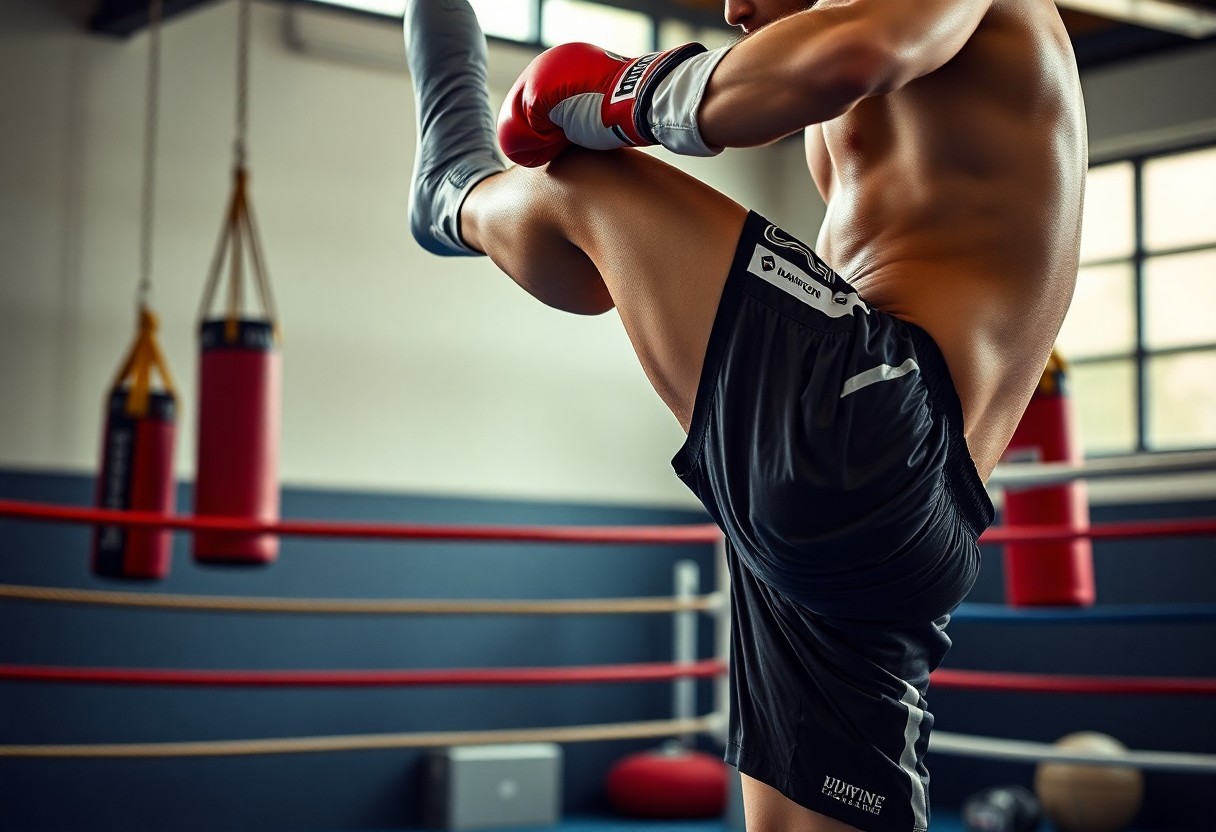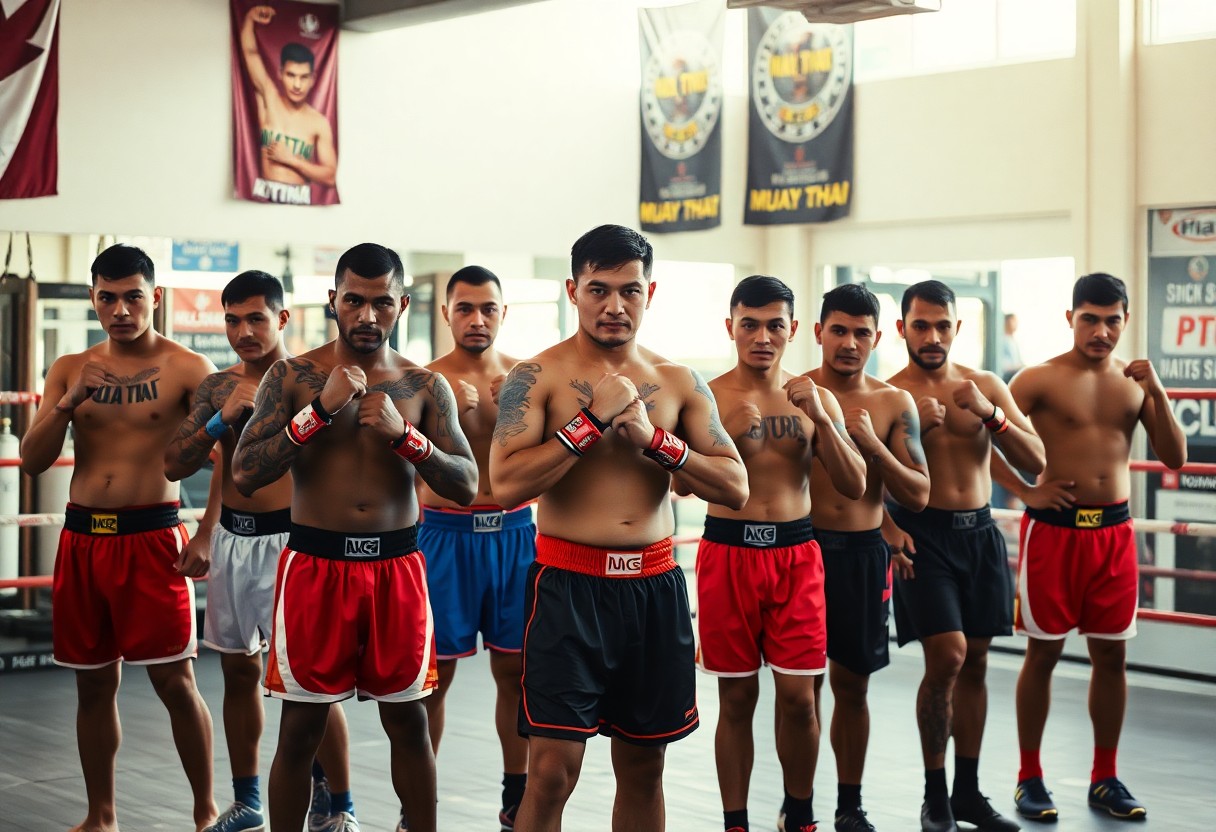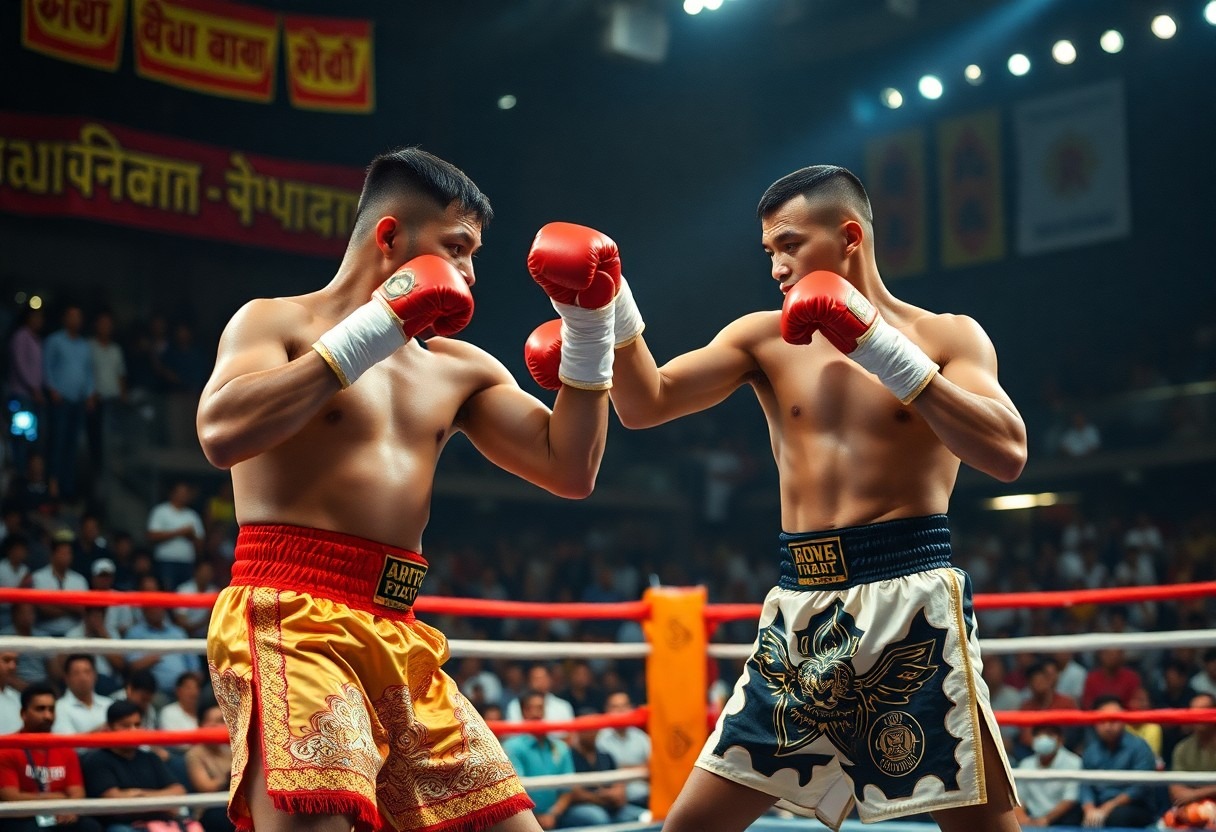
Training in Muay Thai involves a comprehensive progression from pad work to sparring, each phase playing a vital role in developing your techniques and skills. As you navigate through your training camp, you will learn how each segment enhances your understanding of the sport, improves your physical conditioning, and builds your confidence. This guide will outline the important phases of your training journey, ensuring you maximize your preparation and performance in the ring.
The Importance of Pad Work
As you commence on your Muay Thai training journey, pad work serves as a vital component that enhances your striking skills and prepares you for real fight scenarios. This exercise not only sharpens your techniques but also helps you develop timing, rhythm, and coordination with your coach. Engaging in pad work allows for personalized feedback, enabling you to refine your approach and maximize your potential. It’s where you can transform raw talent into effective fighting prowess.
Fundamental Techniques
To build a solid foundation in Muay Thai, mastering fundamental techniques is crucial. These basics include executing proper punches, kicks, elbows, and knee strikes effectively. By dedicating time to the fundamentals during pad work, you develop muscle memory, making it easier to apply your skills during sparring and actual fights. Consistent practice of these techniques ensures that you can execute complex combinations with precision.
Building Striking Accuracy
Above all else, pad work allows you to significantly improve your striking accuracy. Having a coach hold pads for you provides an opportunity to aim for specific targets while enhancing your focus and control. Each strike you deliver can be adjusted based on immediate feedback, helping you understand your strengths and weaknesses. Through dedicated practice, accuracy becomes second nature, making your techniques more effective when it matters most.
Another key benefit of advancing your striking accuracy is the increase in your overall confidence during sparring sessions or competitions. As you become more skilled at pinpointing your strikes, you can better anticipate your opponent’s movements and capitalize on openings. This heightened awareness not only enhances your technical ability but also elevates your mental game, allowing you to remain composed under pressure. Ultimately, focused pad work sets the stage for your success in the ring.
Shadow Boxing: A Critical Component
Now, shadow boxing serves as a vital phase in your Muay Thai training camp, allowing you to refine your techniques and establish rhythm without the constraints of a partner. By engaging in this solo practice, you can focus on your form, speed, and defensive maneuvers, enhancing your overall skill set. This unimpeded environment enables you to visualize your opponents and anticipate movements, fostering mental clarity in the ring.
Improving Movement and Flow
Behind every successful fighter lies the ability to move fluidly and efficiently. Shadow boxing helps you develop this crucial aspect by allowing you to practice footwork, pivoting, and angles in a dynamic manner. As you integrate these movements, your body learns to transition seamlessly between offensive and defensive techniques, ultimately enhancing your performance during sparring sessions.
Enhancing Visualization Skills
Against the backdrop of solitary practice, shadow boxing also trains your mind to visualize scenarios you may encounter in matches. This mental exercise sharpens your reaction times and decision-making abilities by simulating various fight situations. By practicing visualization, you not only build confidence but also prepare yourself to adapt quickly to an opponent’s style.
Plus, effective visualization aids in the retention of techniques and strategies you’ve learned. When you picture your movements and the possible reactions from an opponent, your brain strengthens these neural pathways, making them more accessible in real-time scenarios. By including imagery in your shadow boxing routine, you create a mental framework that supports your physical training, improving both your preparedness and performance in the ring.
Partner Drills and Controlled Sparring
If you are looking to elevate your Muay Thai skills, engaging in partner drills and controlled sparring is imperative. These activities not only enhance your technical abilities but also improve your adaptability in a dynamic training environment, allowing you to apply what you’ve practiced in pads and individually. With a partner, you can work on specific scenarios, timing, and execution, all while fostering a deeper understanding of your techniques.
Developing Timing and Distance
Below the surface of techniques lies the vital skill of timing and distance management. As you practice with a partner, you will learn to gauge the appropriate range for your strikes and when to execute them. This training helps you develop the instinct to move in and out of striking range effectively, enhancing your ability to initiate and evade attacks during sparring sessions.
Applying Techniques in a Safe Environment
Sparring offers a unique opportunity to implement your skills in a controlled setting, allowing you to develop confidence and resilience. During these sessions, you can experiment with your techniques without the intensity of full-contact fighting, which helps you refine your strategies and builds your understanding of fight dynamics.
Applying your techniques in a safe environment is all about gaining valuable experience while minimizing risk. This phase allows you to test the effectiveness of your movements and learn how to read your partner’s intentions. As you spar, focus on executing your strikes with precision, maintaining effective defense, and adjusting your tactics based on your partner’s responses. This adjustment period will enhance your performance in future training and competitive settings.
The Transition to Full Sparring
To successfully make the transition to full sparring, you need to embrace a different tempo and intensity that requires a combination of technical skill and mental fortitude. Start by gradually increasing the rounds and intensity of your sparring sessions to familiarize yourself with the pace and the full contact nature of the practice. You’ll find that adapting from pad work to sparring will enhance your abilities and prepare you for real fight situations.
Sparring Strategies and Tactics
Strategies in sparring involve implementing techniques you’ve practiced while also staying adaptable to your opponent’s movements. Focus on footwork, distance management, and timing to develop your offensive and defensive skills. Always look to create openings, maintain effective angles, and set traps for your training partner, allowing you to refine your timing and reaction speed.
Mental Preparedness for Sparring
Strategies for mental preparedness revolve around visualization, relaxation techniques, and maintaining a positive mindset. Approach each sparring session with the intention of learning, focusing on the process rather than the outcome. Stay present and aware of your thoughts, reminding yourself that sparring is a valuable opportunity to grow and improve your skills.
Hence, reinforcing your mental readiness before stepping into the ring is just as important as physical training. Envision yourself executing techniques successfully and handling various sparring scenarios with confidence. Mental exercises such as mindfulness and controlled breathing can help you maintain composure under pressure, allowing you to perform to the best of your abilities. By cultivating a resilient mindset, you’ll be better equipped to face the challenges that come with full sparring.
Recovery and Conditioning
All athletes know that training is only half the battle; recovery and conditioning play a vital role in enhancing your performance. During a Muay Thai training camp, it’s important to implement dedicated recovery strategies alongside your training schedules. This not only helps to prevent injuries but also ensures that your body is primed and ready for the next workout or sparring session. Understanding how to balance recovery with intense conditioning can make all the difference in your progression.
Importance of Rest in Training
Beside your rigorous training, rest is arguably one of the most important aspects of your routine. Allowing your body time to recover is important for muscle growth and repair, which ultimately leads to better performance. Incorporating proper rest periods ensures that your muscles are not fatigued, leading to improved strength, endurance, and technique as you advance in your Muay Thai training.
Incorporating Conditioning Drills
By integrating specific conditioning drills, you can enhance your cardiovascular endurance and overall athletic performance. These drills can include a mix of jump rope, shadow boxing, and plyometric exercises tailored to improve your agility and strength. Each session should focus on elevating your heart rate and keeping you light on your feet, which is important for striking effectiveness and defensive maneuvers during sparring.
With various conditioning drills, you can effectively build a foundation for explosive power and functional agility. Incorporating exercises like interval sprints and circuit training, allows you to simulate the high-intensity bursts experienced in a fight. Gradually increasing the challenge of your conditioning sessions not only builds stamina but also enhances your mental toughness, giving you the edge you need to succeed in the ring. Prioritizing these drills will greatly contribute to your overall performance and readiness for sparring sessions.
Nutrition and Hydration
Once again, as you prepare for your Muay Thai training camp, focus on your nutrition and hydration. The right fuel supports your workouts and recovery, allowing you to maximize your training sessions. Prioritize nutrient-dense foods and maintain hydration levels to help you endure the physical demands placed on your body during intense training sessions.
Fueling for Optimal Performance
One of the most important aspects of your nutrition is ensuring you consume adequate macronutrients. Incorporate lean proteins, healthy fats, and complex carbohydrates into your meals to support energy production and muscle recovery. By doing so, you’ll be setting yourself up for peak performance throughout your training camp.
Staying Hydrated During Camp
Above all, staying hydrated is vital to your overall performance and recovery. Drinking water consistently throughout the day helps regulate body temperature, supports joint health, and prevents fatigue during training. Monitor your hydration levels to ensure you are always ready for your next session.
Hydrated individuals experience improved concentration and stamina, important for enduring the rigorous demands of a Muay Thai training camp. Consider sipping on electrolyte-infused beverages, especially during intense sessions or in hot conditions, to replenish lost minerals, boosting your performance. Establish a routine to drink water regularly, and adjust your intake based on your personal sweat rate and training intensity.
Summing up
Hence, as you progress through your Muay Thai training camp, transitioning from pad work to sparring is key in developing your skills and confidence. Each phase builds upon the last, enhancing your technique, timing, and adaptability. Embrace the structured progression, allowing you to refine your striking prowess while gaining valuable experience in a controlled environment. This holistic approach will empower you to face sparring challenges with greater ease, ultimately preparing you for success in competition and real-world scenarios.





